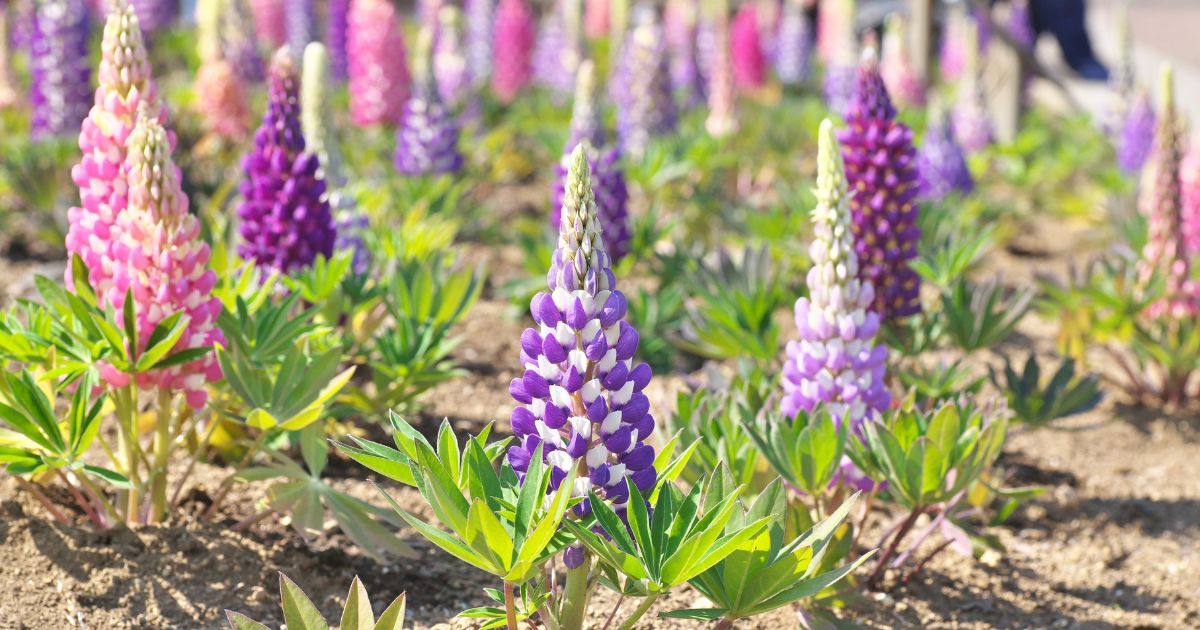Winter can be a challenging time for our feathered friends, but with the right selection of perennials, you can create a welcoming habitat that helps birds thrive during the colder months.
These 25 essential perennials are perfect for providing food, shelter, and protection from the elements, ensuring that your garden becomes a sanctuary for birds. Let’s explore each plant and discover how it can contribute to a bird-friendly winter haven.
Holly (Ilex)
Holly is a fantastic choice for providing winter interest and food for birds. Its bright red berries are a vital food source when other options are scarce. Plant these hardy shrubs in your garden to add a splash of color and attract birds like robins and thrushes.
Winterberry (Ilex verticillata)
Winterberry is a deciduous holly that loses its leaves but retains its bright red berries throughout winter. These berries are a critical food source for birds, especially when temperatures drop and insects become scarce.
Coneflower (Echinacea)
Coneflowers are not only beautiful in the summer, but their seed heads provide essential winter food for birds like finches and sparrows. Leave the seed heads intact after blooming, and watch as your garden becomes a hub of bird activity.
Rudbeckia (Black-eyed Susan)
Rudbeckia, or Black-eyed Susan, offers long-lasting seed heads that birds love to feast upon during winter. Their sturdy stems can withstand snow, making them an excellent choice for providing food and habitat.
Sunflower (Helianthus)
Sunflowers are synonymous with summer, but their seeds are a winter staple for birds. Allow the seed heads to dry on the plant and watch as birds flock to extract the nutritious seeds hidden within.
Aster
Asters bloom in late summer and fall, but their seed heads persist into winter, offering a valuable food source for birds. Their dense structure also provides shelter and habitat during harsh weather conditions.
Goldenrod (Solidago)
Goldenrod is often associated with allergies, but its seeds are a favorite among birds. These bright perennials add color to the garden and provide essential nutrition for birds in winter.
Sedum (Stonecrop)
Sedum, or Stonecrop, is beloved for its unique appearance and resilience. In winter, its structure offers shelter, while certain varieties retain seeds that provide food for birds.
Russian Sage (Perovskia atriplicifolia)
Russian Sage is a hardy perennial known for its aromatic leaves and long-lasting seed heads. In winter, it continues to provide food and habitat, attracting birds with its textured foliage.
Lavender (Lavandula)
Lavender is not just for summer fragrance. In winter, its dried flower spikes add structure and shelter to the garden, while certain birds enjoy the seeds that persist into the colder months.
Bee Balm (Monarda)
Bee Balm, or Monarda, is a pollinator favorite with its vibrant summer blooms. In winter, its seed heads continue to attract birds, providing essential nutrition and adding interest to the garden.
Joe-Pye Weed (Eutrochium)
Joe-Pye Weed is a tall perennial that attracts birds with its abundant seed heads in winter. Its height offers a vantage point for birds and adds movement to the winter landscape.
Switchgrass (Panicum virgatum)
Switchgrass is a native grass that provides essential cover and food for birds during winter. Its tall, feathery seed heads are both ornamental and functional, offering sustenance to a variety of bird species.
Milkweed (Asclepias)
Milkweed, famous for supporting monarch butterflies, also provides winter interest with its seed pods. Birds enjoy the seeds, and the plant structure adds a unique touch to the winter garden.
Blazing Star (Liatris)
Blazing Star, or Liatris, features tall spikes that persist into winter, providing seeds for birds like finches. It’s a striking choice for adding height and texture to your winter garden.
Sea Holly (Eryngium)
Sea Holly is known for its architectural structure and stunning blue flowers. In winter, its seed heads offer food for birds and add a unique, spiky texture to the garden.
Coreopsis
Coreopsis offers a long blooming season, and in winter, its seed heads provide sustenance for birds. It’s a versatile perennial that adds cheer to the winter landscape.
Gaillardia (Blanket Flower)
Gaillardia, or Blanket Flower, offers vibrant blooms in summer, and its seed heads nourish birds in winter. It’s a low-maintenance option for adding color and food to your garden.
Purple Coneflower (Echinacea purpurea)
Purple Coneflower is a garden staple, offering beauty in summer and seeds for birds in winter. Its sturdy stems support heavy snow, providing a reliable food source for birds.
Blackberry Lily (Iris domestica)
Blackberry Lily features unique seed pods that open to reveal shiny black seeds. These seeds are a treat for birds, and the plant adds an exotic touch to the winter garden.
Lupine (Lupinus)
Lupine features vibrant spikes in summer, and its seed heads persist into winter, providing an important food source for birds. Their tall structure also adds vertical interest to the garden.
Yarrow (Achillea)
Yarrow is a hardy perennial with flat-topped flower clusters. In winter, its seed heads provide nourishment for birds, while the plant’s structure adds texture to the garden.
Ironweed (Vernonia)
Ironweed is a tall perennial that offers seeds for birds in winter. Its height and sturdy structure make it an excellent choice for adding movement and interest to the garden.
Mountain Mint (Pycnanthemum)
Mountain Mint is a fragrant perennial that attracts pollinators in summer. In winter, its seed heads offer nutrition for birds, while its aromatic foliage adds sensory interest to the garden.
























